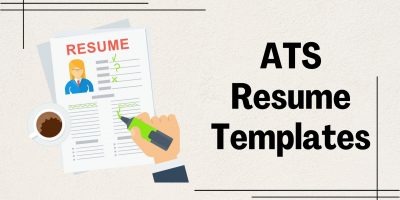
Hiring from Within: Growing Your Own Internal Talent Pool
As top talent is becoming more scarce, is hiring from within becoming a critical business objective for growth?

In the digital age of HR and recruitment, it is hard to fathom a time when recruiters published jobs in newspapers, went through stacks of physical resumes, and manually checked references to shortlist candidates.
Nowadays, tools like an applicant tracking system (ATS) or a candidate management system (CMS) do the heavy lifting by automating these processes.
Since they bear resemblance in many ways, it’s easy to confuse the two. However, although they share a similar purpose, there are distinctions that we’ll be exploring in this article, along with their benefits, additional functions, and potential criticism.
A candidate management system is a comprehensive HR software solution that manages and facilitates the entire candidate lifecycle. It typically includes Candidate Relationship Management (CRM) capabilities, enabling recruiters to maintain candidate profiles, track interactions, and nurture relationships over time, features not usually found in ATS systems.
Although they share similarities, recruiting CRM is a broader term than ATS, centered around managing and growing relationships with potential job candidates.
An applicant tracking system, on the other hand, is best described as a “lighter” version of a candidate management system.
In other words, ATS platforms are human resource tools that streamline and automate the recruitment process, specifically focusing on managing job applications. They act as a centralized database to efficiently track and organize candidate information, job postings, and applicant interactions.
The primary objective of an ATS platform is to enhance the efficiency and effectiveness of the hiring process by simplifying candidate management and ensuring a smooth and structured candidate selection.
Many mistake ATS for a recruiting CRM since they both automate the hiring process. The confusion further expands with the continuous evolution of ATS, which, since its humble beginnings in the ’90s, has taken on many of the functionalities of candidate management systems.
However, there are some notable differences.
While ATS platforms primarily focus on managing job applications, candidate relationship management, as the name suggests, focuses more on the candidates, and it’s a much broader term. One of its key features is the ability to create and manage talent pools, which serve as repositories of prospects for future job openings.
Overall, ATS is primarily data-driven and transactional, allowing HR and recruiters to streamline the hiring workflow. In contrast, candidate relationship management emphasizes building relationships, talent nurturing, and engagement strategies.

An applicant tracking system can be viewed as a subset or a specialized form of candidate management.
If we look at it through the scope of a recruiting CRM, an ATS serves as a centralized database that enables recruiters to effectively track, organize, and evaluate candidate information before deciding on the best applicant and starting the onboarding process.
While the broader scope of a CMS system encompasses additional functionalities such as talent sourcing, relationship building, and talent nurturing, an ATS plays a crucial role within the candidate management ecosystem, providing specific features such as resume parsing, candidate screening, interview scheduling, and communication management.
As such, it’s highly beneficial for recruiters and employers and can aid any business, regardless of size or industry.
Research shows that 98.8% of Fortune 500 companies use an ATS.
Moreover, a study by KellyOCG, Digital Recruiting: Disruption by Design, And Not Default, estimates that 66% of large companies and 35% of small business owners rely on recruitment software.
Whether it’s big corporations or small employers, applicant tracking systems are beneficial for all hiring managers since they help keep the focus on interviewing candidates rather than administrative tasks.
However, aside from increased efficiency, there are many other benefits of ATS, including:



While they do come with many benefits, it’s important to note that not all ATS solutions offer the same functionalities or will provide the same results.
Considering that candidate management is a comprehensive and time-consuming process, we’ve compiled a list of must-have ATS features to enhance the quality of hire.
ATS platforms go beyond candidate management and offer additional functionalities that support different HR initiatives. From DE&I initiatives to employee engagement, these are some of the most notable features of applicant tracking systems that complement candidate management and recruitment.
Unconscious bias can easily find its way into the workplace. Unfortunately, this can also affect the recruitment process, causing the hiring team to overlook candidates because of their gender, race, ethnicity, and even physical ability.
So, companies employing an ATS designed to minimize hiring bias can directly support diversity and contribute to a more inclusive environment. In fact, many ATS platforms provide features to help organizations track and measure diversity and inclusion metrics, ensuring fair and unbiased hiring practices.
Law compliance can be a tedious and error-prone process that involves a lot of paperwork, organization, and attention to detail. However, applicant tracking software can automate these processes, making them much easier to handle.
ATS solutions often come equipped with tools that assist in adhering to legal and regulatory obligations, such as managing applicant data privacy and ensuring compliance with equal employment opportunity laws.
Finally, an often-overlooked benefit of ATS platforms is that they can support employee retention and engagement.
By now, we’ve seen what these platforms can do, from streamlining hiring processes and facilitating seamless onboarding to promoting internal mobility and enabling effective performance management.
So, while they automate the administrative tasks, HR and recruiters can focus more on building a better relationship with employees or applicants, providing a positive onboarding experience, and promoting career development opportunities.
Between this and how they can drive diversity, ATS platforms help employees feel valued, supported, and invested in their professional growth. Additionally, they foster transparent communication, timely feedback, and employee recognition, cultivating a positive company culture.
Following the massive tech revolution in the past few decades, the digitalization of HR, and the recent COVID-19 pandemic, companies are heavily investing in technology to streamline their operations. In fact, the Society for Human Resource Management (SHRM) reports that corporate spending on HR tech increased by 57% between 2020 and 2021.
The recognition and growth speak volumes about the importance of candidate management software and what it can do for the HR department.
But how does an applicant tracking system aid an HR manager?
According to PwC’s 2022 HR Tech survey, 39% of HR leaders agree that recruiting and hiring are one of the most significant issues for human resources, placing them second on the top-ten list of HR challenges.
Investing in ATS can be the right technological decision since this software can assist HR managers in handling complex and time-consuming processes and securing a good hire.
Not only that, but they can tackle some of the biggest challenges for the department, including modernizing HR, improving data analytics, and winning the war for talent.
The following are key areas where the software proves invaluable for human resources.
With the help of ATS, an HR manager can create detailed job postings within the system, including job descriptions, qualifications, and desired skills. These platforms often provide templates and standardized formats that ensure consistency.
Moreover, the software can automatically distribute them on job boards and social media platforms, helping companies reach a wider pool of candidates. HR and recruiters can also track their job posting performance, seeing metrics such as views and applications.
One of the best features of applicant tracking systems in candidate management is the ability to automatically source candidates from various channels, screen resumes, and identify the best-fit candidates based on predefined criteria.
These platforms often integrate with external job boards, career websites, or networking sites. Then, they shortlist the candidate pool using filters and keywords based on qualifications, experience, location, or other specified criteria.
After screening for candidates, the next step of the recruitment process would be to design assessments that align with the specific job requirements. However, this can be time-consuming without automated candidate tracking, which helps HR managers to track and record applicant performance.
The software also serves as a centralized candidate database for storing applicant information, resumes, and assessment results.
With automated scheduling features, ATS platforms simplify coordinating interview times with candidates and interviewers. Many of these apps integrate with popular calendar systems, which allow hiring teams to view candidate availability, schedule interviews, and send automated invitations.
Additionally, they can send reminders and notifications before the interview or enable the interviewer to reschedule or cancel.
Although not everyone utilizes them, background checks are necessary for hiring the best talent. Therefore, some ATS software integrates with background screening services to help HR and recruiters automate this process, enabling HR managers to conduct pre-employment background checks seamlessly
Finally, ATS platforms assist HR in managing the last stages of the hiring process, including job offer letters, contract generation, and facilitating a smooth onboarding experience for new hires.
These are some of the many helpful practices that emerged from the evolving recruitment landscape, helping HR and recruitment specialists attract top talent, manage the risk of a bad hire, and build successful teams.
However, although essentially good, ATS platforms also have some downsides in managing candidates, making it crucial for employers to understand the full scope of an applicant tracking system.
Despite their numerous advantages, ATS platforms have faced criticism over the years, from their keyword dependency to lacking a human touch in hiring.
In fact, studies have shown that, on average, applicant tracking systems reject 75% of candidates immediately after applying for a job.
This high rejection percentage happens due to the software’s extensive reliance on keywords. Therefore, if an applicant doesn’t have the exact words and phrases in their resume, they could slip through the cracks, and the ATS will automatically reject it, potentially losing suitable and qualified candidates.
For example, employees who are changing careers or have no previous experience in the field stand no chance against the algorithm and will be immediately disqualified.
However, keyword reliance can even affect highly qualified job applicants who do not have a keyword-optimized CV, which sets forth another potential issue – ATS resumes.
These are keyword-stuffed CVs that match the job requirements and are created with the sole purpose of being “ATS-friendly.” Although they are not inherently bad, some candidates can use them to “cheat” the system.
Between this and the heavy reliance on automation, ATS platforms may also hinder the recruiter’s personal touch, observant nature, and critical decision-making, causing employers to lose valuable potential employees.
Ultimately, HR professionals need to strike a balance between automation and human judgment to choose a candidate that fits their hiring persona and company culture rather than one that checks out all of the ATS criteria.

Using ATS effectively means overcoming the drawbacks and criticism while maximizing the benefits. Hence, some of the best practices for effective ATS use include:
By implementing these practices, companies can leverage the benefits of ATS while mitigating its potential drawbacks. This secures a more effective and human-centered hiring process, leading to selection of the best candidates.
As traditional recruitment is becoming outdated, employers are turning to digital solutions.
A market analysis report by Grand View Research values the ATS market size at $2.14 billion, with an estimated compound annual growth rate of 6.2% from 2022 to 2030.
While it’s difficult to predict whether ATS will be the future of hiring, it’s undoubtedly here to stay.
Although we’ve seen numerous benefits, ATS platforms should overcome the concerns of their reliance on algorithms and their impersonal nature, which can create a less engaging candidate experience.
Nonetheless, as HR tech advances, the future of applicant tracking systems holds promise for addressing these criticisms. Future iterations of this software should focus on mitigating bias through improved algorithms, leveraging natural language processing to understand candidate qualifications better, and incorporating features that foster personalized interactions.
That way, the evolution of ATS will likely continue to shape the hiring landscape, empowering organizations to leverage data-driven insights while ensuring fair and inclusive recruitment practices.
ATS platforms are one aspect of a candidate management system with a clear goal of streamlining the hiring process.
While criticisms of ATS exist, applicant tracking systems can significantly enhance efficiency, improve diversity and inclusion efforts, ensure legal compliance, and support HR and recruitment teams when used effectively and in conjunction with human judgment.
Ultimately, distinguishing between an ATS and a candidate management system, and understanding the benefits and drawbacks of these tools, can help organizations choose the right one or combination of tools to optimize their recruitment efforts and build robust talent pipelines.
Disclosure: Some of the products featured in this blog post may come from our partners who compensate us. This might influence the selection of products we feature and their placement and presentation on the page. However, it does not impact our evaluations; our opinions are our own. The information provided in this post is for general informational purposes only.
Content Writer at Shortlister
Browse our curated list of vendors to find the best solution for your needs.
Subscribe to our newsletter for the latest trends, expert tips, and workplace insights!

As top talent is becoming more scarce, is hiring from within becoming a critical business objective for growth?

From remote work integration to cutting-edge recruitment tech, explore the transformative shifts in the staffing industry.

Empower middle management to navigate the Great Resignation by addressing burnout and providing essential support. Discover how age, gender, and race influence this transformative workforce trend.

Avoid the financial drain of a bad hire by implementing effective recruitment strategies that will contribute to your team’s success.
Used by most of the top employee benefits consultants in the US, Shortlister is where you can find, research and select HR and benefits vendors for your clients.
Shortlister helps you reach your ideal prospects. Claim your free account to control your message and receive employer, consultant and health plan leads.